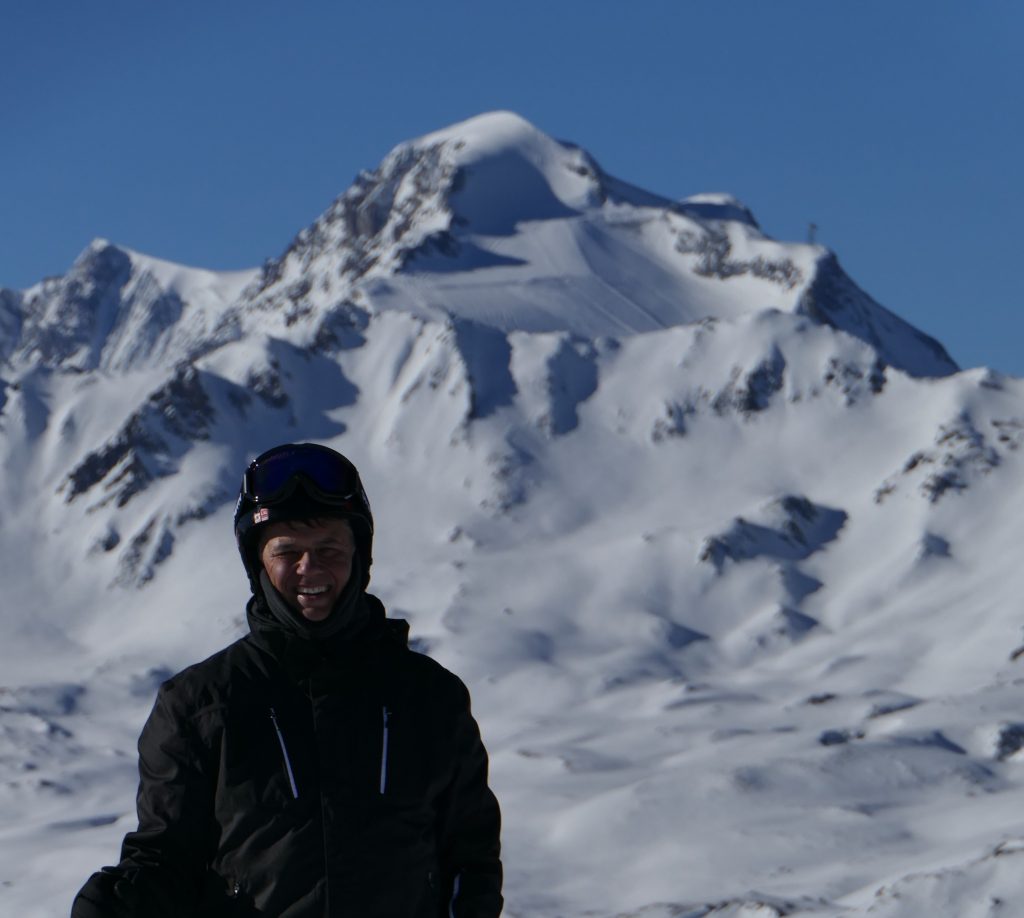Tony had done well during the previous three days, understanding all the aspects of technique and body management that we had gone into but there was still a legacy of stiffness and rigidity that was persisting and holding back his progress. Given that we had one more session only available I had to choose carefully the approach that might ensure the best route to success. I’d been reluctant to work on skating all week due to Tony not being a skater but decided to try to introduce it surreptitiously.
Tony was bracing against his outside leg as forces built up in the turn. This is a legacy from his previous way of skiing with the centre of mass moving in the wrong direction (weight transfer/statics). The overall impression this presented was that the last part of the turn looked like the ski was being pushed out/away – but it wasn’t – it was just the leg going rigid and then causing the step and catching of the inside ski when entering the next turn. The overall effect was a loss of fluidity.
We began by just traversing and bending down and pushing back up with the downhill leg. Initially Tony skidded but then corrected this by holding the working leg inwards with the adductor muscles.
Next, the final push up was used as preparation for a turn down the hill. This was then related to skating timing which is down/up in a turn and synonymous with the down/up of a motorbike when turning. The aim is to provide an anchor and stability when completing the turn and to use this to redirect the center of mass downhill over the lower/skating ski. Until now our focus had been standing solidly on the uphill ski and extending that leg as the body toppled into the turn – so this skate and extension of the lower leg can appear to be contradictory – but in practice it is more fundamental and works directly with the ski and body mechanics.
When skiing at normal recreational speeds and not inclining dramatically into a turn the outside leg (knee and hip) needs to bend through the turn to lower the body into the turn. When going very fast the leg needs to extend (as seen with many photographs of racers). The common theme is that the centre of mass always goes down into the turn and back up out of it.
Tony needed to get his outside leg flexing then functionally extending at the end of the turn to get rid of the bracing and rigidity. The result of bringing skating into his skiing was that the legs became far more functional, the overall movement much more fluid and the “stepping” much reduced.
The flexing should be relaxing – like sitting – which when facing downhill still keeps you on the front of the ski boots. As the turn develops the angulation and counter rotation of the pelvis maintains that “downhill facing” aspect as pressure builds up on the outside ski.
Mindfulness
Yesterday we had worked on continuous short rhythmic turns – the body coming over the lower ski early. The point about this is that our objective was to focus on movement and feedback – going through a mental checklist continuously – shifting attention from one thing to another. We feed the body with information. Most people ski unconsciously and are only interested in adrenaline but that’s because they are not trained with movements which lend to visualization and internalising. They cannot be centred with their focus and thoughts. Skiing should resemble a form of moving meditation where the focus is strongly internalised – ironically, this increasing the capacity to respond and relate reflexively with the terrain and environment. (For example – eliminating fears due to being focused on other things.)


